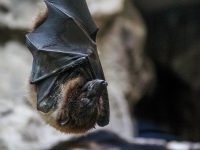A peaking virus
The mutation options for the pandemic coronavirus appear to be beginning to be running out

An experienced epidemiologist noted that in the early days of the pandemic, it was not uncommon for some members of the same family to be infected while others were not. Lately, however, this is no longer the case. «All members are affected. So are their contacts.» She added that, so far, outbreaks have been classified as social, occupational, or domestic. Now, in our second pandemic summer, they are much more fluid, and many outbreaks are «a more complex mix». Indeed, global epidemiological surveillance suggests a higher transmissibility for some virus variants. The expert was surprised by this fact: «We had already noticed this, even before we did the calculations».
Interrogating viral genomes is useful and fascinating because they do not lie. Complementing epidemiological data with genomic or other experimental data can help us to better describe the pandemic. What do the genomes of the latter variants tell us? By examining the viral spicule, an outer protein of the coronavirus that interacts with the cellular receptor – the gateway to the cell – certain amino acid changes have been observed in some areas of interaction between the virus and the receptor. These changes in the SARS-CoV-2 spicule, responsible for a better fit between the virus exterior and the cellular receptor, provide optimised viral transmissibility.
Vaccines have begun to represent a glimmer of light at the end of the pandemic tunnel. But each wave reminds us that we are still in there. Increased transmissibility is not good news, but if transmissibility is beginning to peak, that would indeed be. And that is what viral genomes are starting to show lately.
The process of biological evolution has some limitations to improvement. Many of the mutational changes tested in the coronavirus spicule will be neutral in nature and will not lead to a reproductive advantage, and others, far from improving the biological efficacy of the virus, could ruin it. The range of viable mutations favourable to the virus (those that favour natural selection and reproductive success) are finite and rare.
«Increased transmissibility is not good news, but if transmissibility is beginning to peak, that would be»
Anglophones, with their traditional humour, have tried to «popularise» the name of some of these favourable mutations. Similarly to the way hurricanes are named, they have given personal names to some of them. Some of them are quite common, so these names are starting to sound familiar. For example, three of the amino acid changes in the spicule associated with increased transmission, D614G, N501Y, and E484K, have become DouG, NellY and EricK. Some of these mutations have been observed in different variants of the coronavirus. For example, the alpha variant (previously called British) did not initially have the EricK mutation (E484K) in its spicule, yet genomes of the alpha variant were later found to have it. In other words, chance produced it and natural selection incorporated it because it has an advantage.
The interpretation from the point of view of viral evolution is that potential mutations related to greater biological efficacy are limited and specific. Different variants incorporate them when they occur. This is an evolutionary process known as convergence. The options for mutational improvement seem to be starting to run out. That is why the same advantageous mutational solutions are beginning to be found in independent lineages.
While it would be unwise to consider SARS-CoV-2 as evolutionarily exhausted, these are indeed good reasons for optimism, because they represent a first sign that the pandemic coronavirus is beginning to struggle to find new evolutionary improvements that significantly increase its biological efficacy. Which, on the other hand, we can safely say has been extensive.





